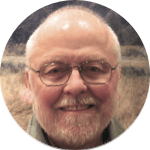This article is an excerpt from the July/August 1998 issue of the Enneagram Monthly.
I’ll never forget it. Even though I was “just” a dance major, I had to take pre-med physiology and anatomy. Because my university had a good medical school, we were “fortunate” enough to have cadavers to work with in our anatomy class. The physiology class, also pre-med, had its share of rats, gerbils and frogs, which we used in quite a few experiments.
Leaving out the gruesome details, one of the most memorable labs was exploring “neural pathways.” Neural pathways are the channels through which information travels between the brain and body. A neural pathway begins with a message, thought or impulse from the brain. It could be a thought, feeling, or an action you take, a behavior, something you do. This message travels along the nerves. The nerves communicate the message to appropriate muscle groups which then engage the body in the desired action. Messages can flow in the opposite direction along these neural pathways also. A physical sensation, like touching a hot stove for instance, could begin a series of messages. The muscles would innervate the nerves, and the nerves would give a message to the brain, in this case, “Pain#remove your hand, NOW!” An immediate message from the brain would flow back to the hand to remove the hand from the stove. This series of messages is communicated so quickly, fluidly and unconsciously that you’re not aware of it happening.
The earliest neural pathways we develop probably originate in the body. We’re cold, hungry, or need a diaper change, and a series of messages are communicated to the brain which then stimulates crying or doing something to get attention. As we mature and our thinking and feeling abilities develop, we exercise various pathways and begin message patterns begin to originate in the brain. Thought patterns could include, “I need to study to do well on this test,” or “I’m want to date (fill in the blank),” “I’m working on this merger.” Feeling patterns could be a feeling of confidence, inspiration, awe, insecurity, fear or doubt. These are often automatic, and the message they carry is communicated to the brain which inspires a related action.
If we don’t like how we’re thinking, feeling or what’s happening in our lives, we can change the patterns. This, however, is not automatic, and the process for doing that needs to be, and can be learned by creating a new neural pathway.
Here’s an example of learning and training a new neural pathway.
As infants, we were unable to reach for a cup gracefully. We first practiced with a bottle, holding it sometimes with both arms or feet, and it was years until we finally learned to use it properly. By the time we grow up, it has become an automatic response — we feel thirst and quite adeptly reach for a cup, bring it to our mouths, swallow, spill nothing, and replace the cup.
We have forgotten how long and comic our learning period was. We perform thousands of other examples spontaneously and immediately throughout the day, each time activating countless nerve and muscle synapses to execute messages from our brains.
Back to the lab. Working with frogs, we would pinch their feet under different circumstances to explore if, when and how the frogs would react. We found that reactions went in both directions along these neural pathways. If we pinched their feet, they’d withdraw them; when we activated pain centers in the brain, their bodies would flinch in a certain way. Though these lab experiments were difficult emotionally, and certainly animal rights groups would have a lot to say about them, the point was explicitly made.
There are neural pathways throughout the body, messages can and do flow along them, and the messages flow in both directions.
Later in life, it dawned on me that we spend years perfecting how to send messages from the mind, training our bodies to “behave,” but spend much less time developing our “listening ability” for messages that originate in the body. In time, the intelligence of the body often becomes atrophied through disuse.
One of the ideas behind EnneaMotion is that our mental states influence our physical actions as much as physical actions influence our minds and moods. For example, is there such a thing as a “physical confidence?” Imagine moving “as if” — moving directly in space, with a grounded centeredness, a decisive forward force, not hesitating. After moving like this for a while, we would generate, activate and develop the neural pathway that transmits the feeling of confidence, and we would start to feel confident.
The exercise would be concluded with a stance that captures this feeling of confidence, represented by having the feet firmly planted on the ground, activating the abdominal muscles to feel strength in the gut, with the arms deliberately connected into the back, feeling a length in the spine and feeling the whole body as one dynamic unit.
If we practice and hold such a “confidence pose,” this neural pathway gets trained and strengthened, much like muscles getting bigger and stronger when working out at a gym. The message provoked by this stance would run along the neural pathway that had already been created, and a feeling of confidence would arise. This confidence would be there not only physically, but emotionally and intellectually as well. This physical stance of confidence can be called upon in a moment of need.
The same process can be done with any emotion you feel a lack of, that you want to more deeply and easily embody.
The more experience we have developing and listening to the flow of intelligence from our bodies, the more balanced we can be and the easier it can become to respond to life’s
situations with appropriate action.
(c) Andrea Isaacs, 1998.



